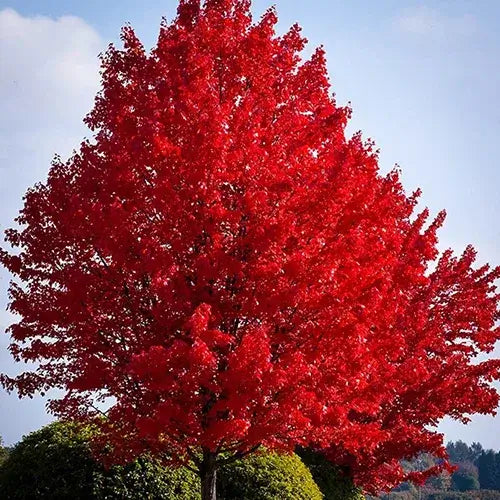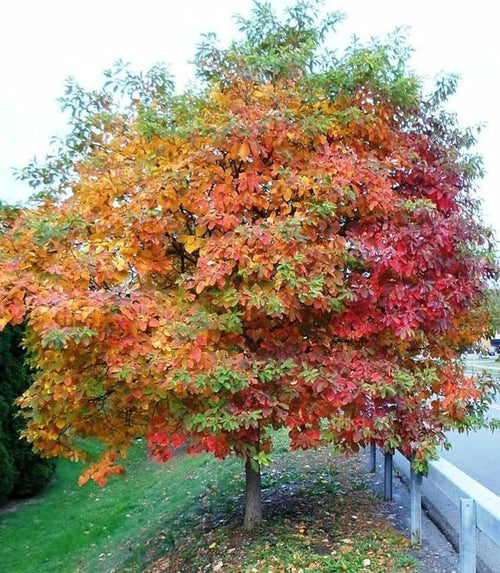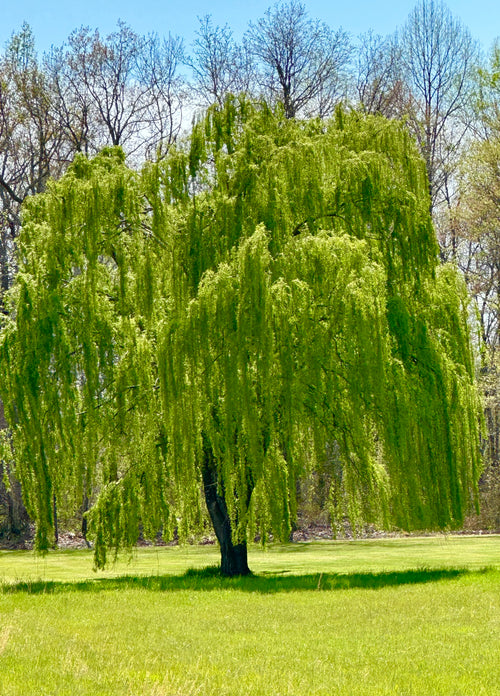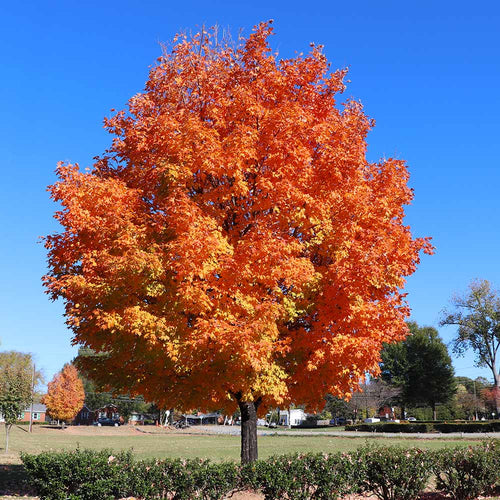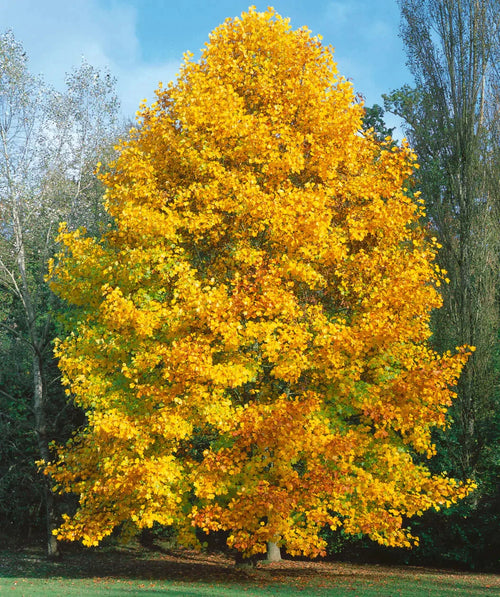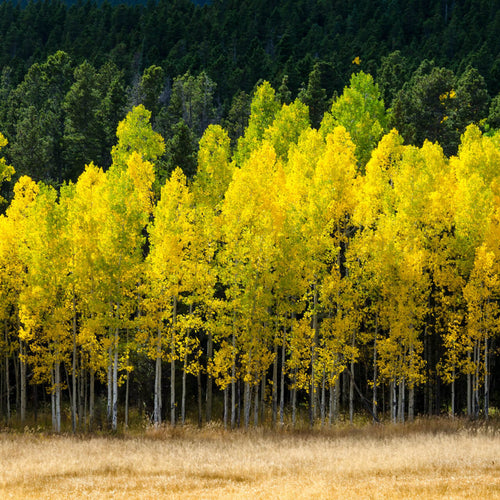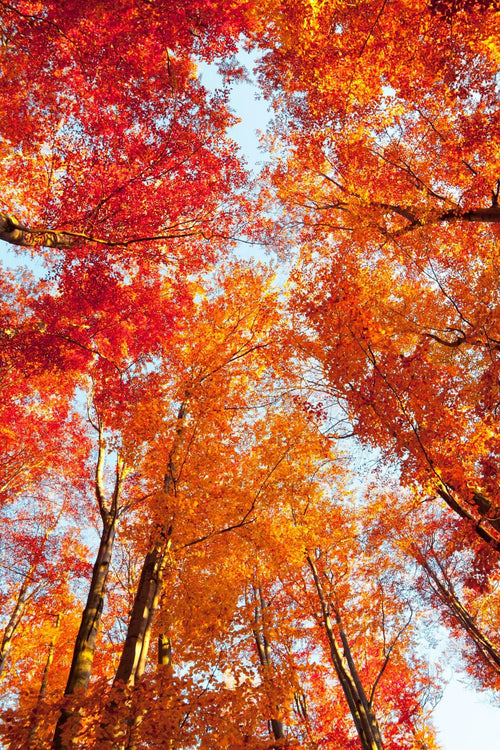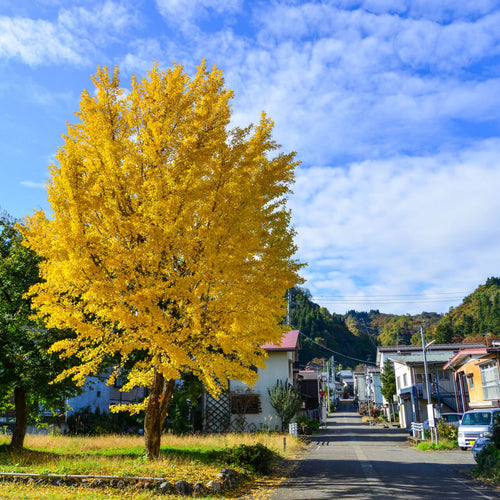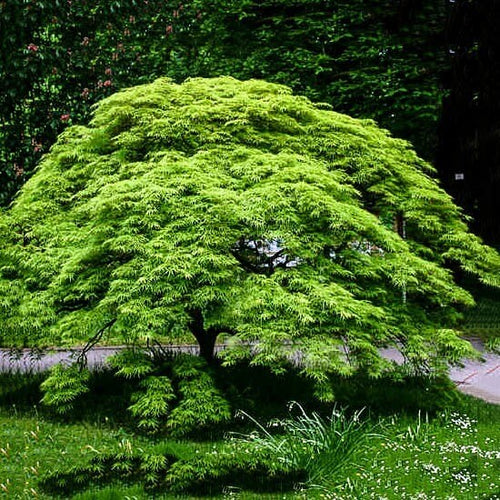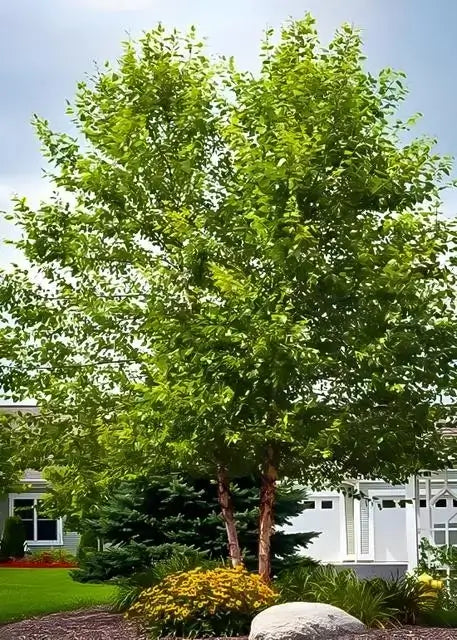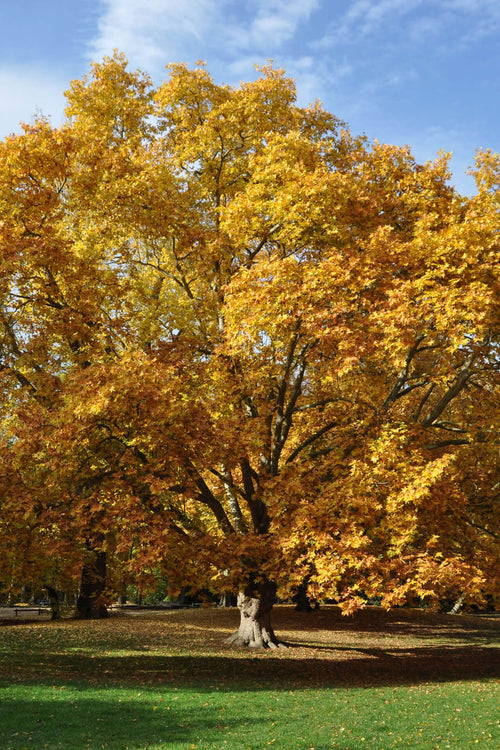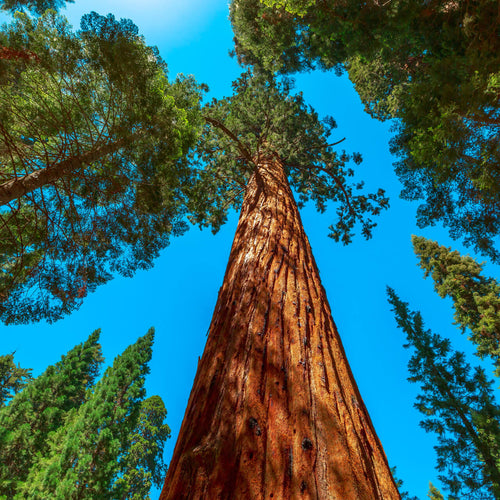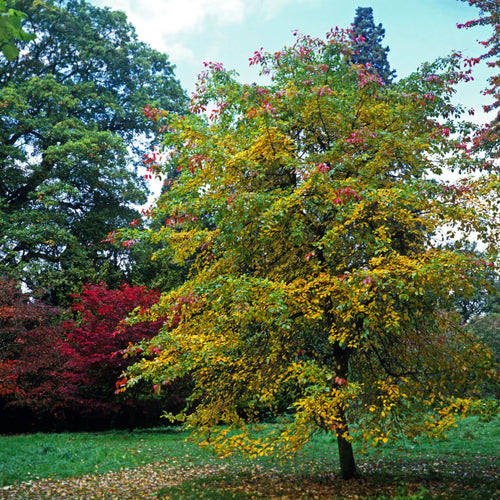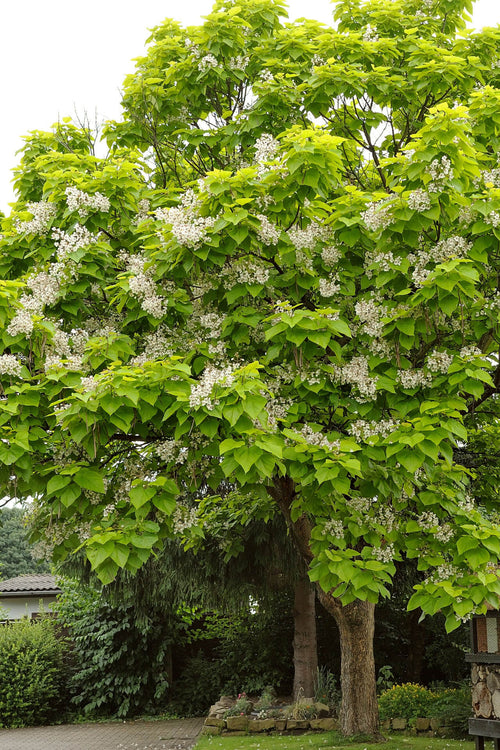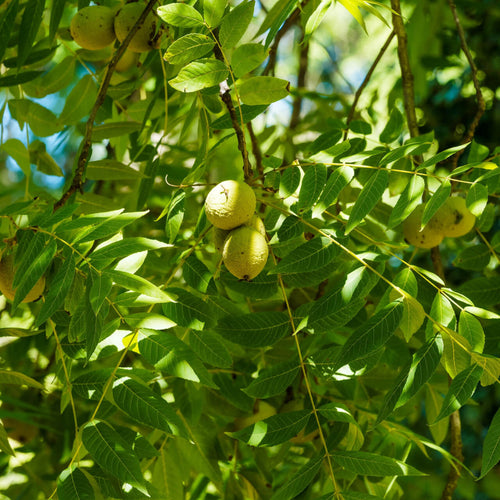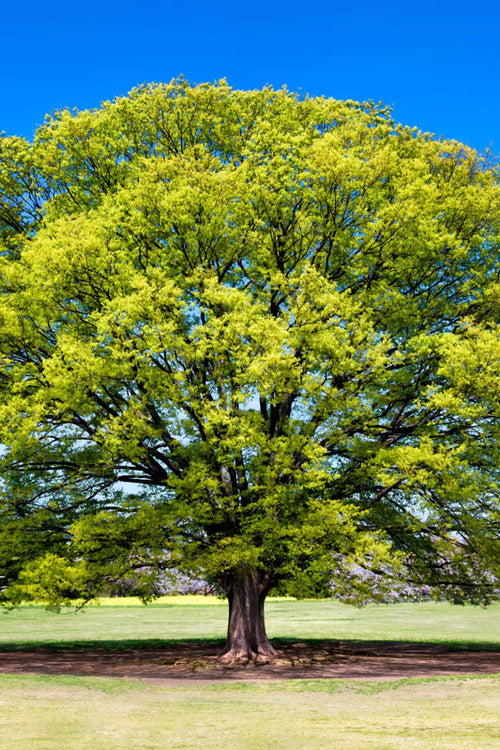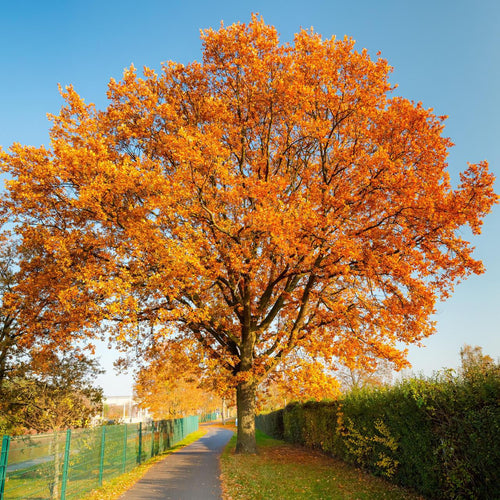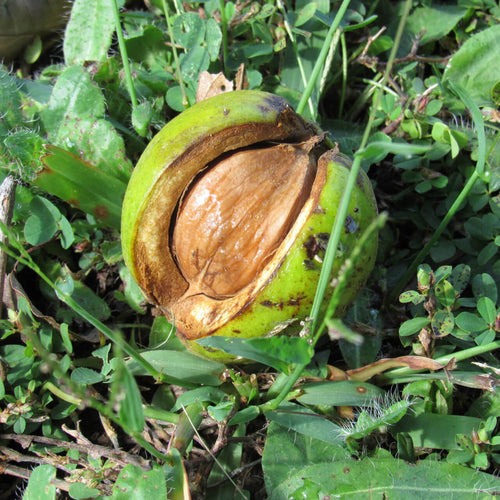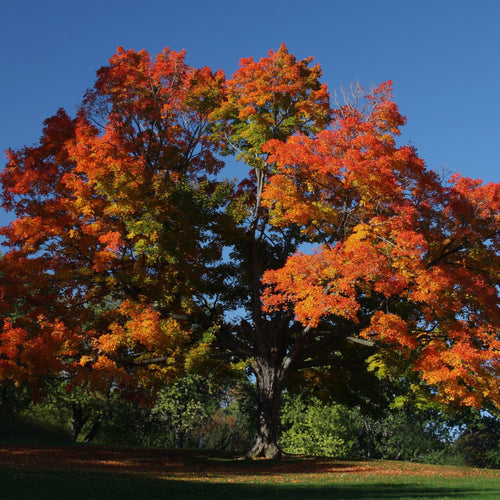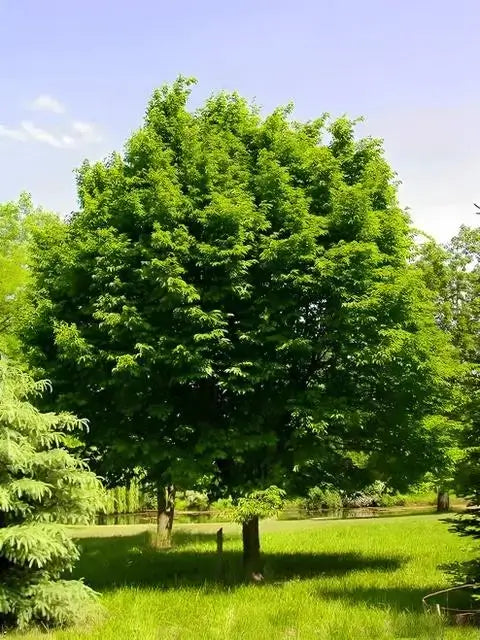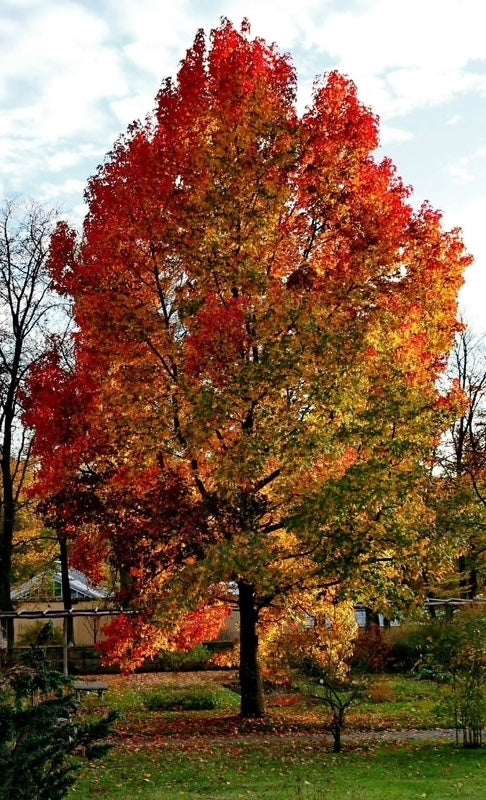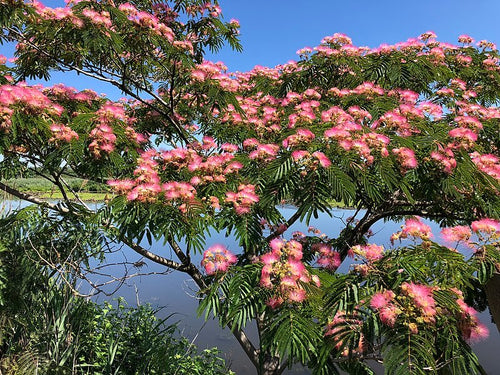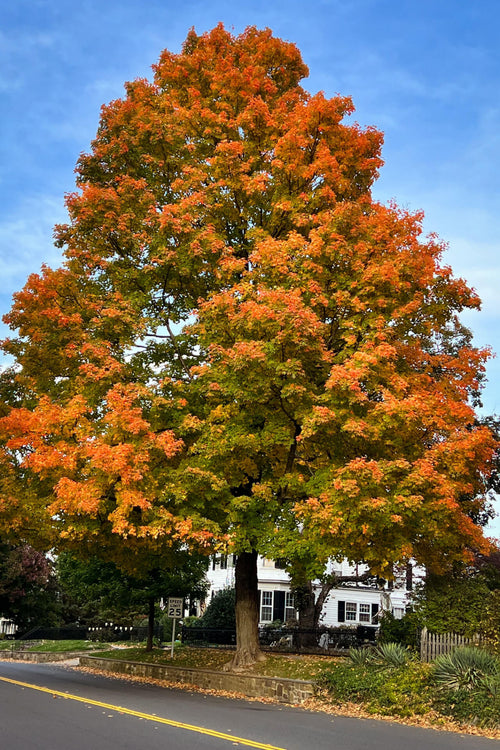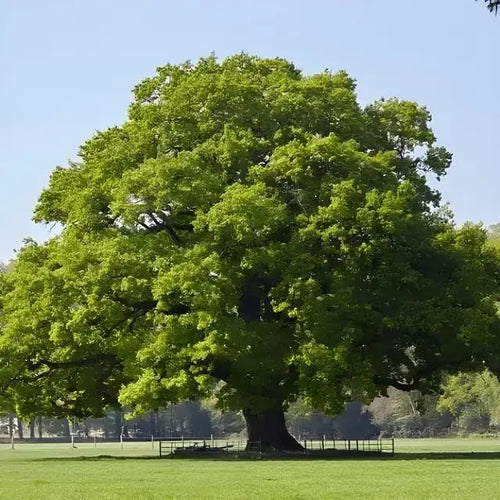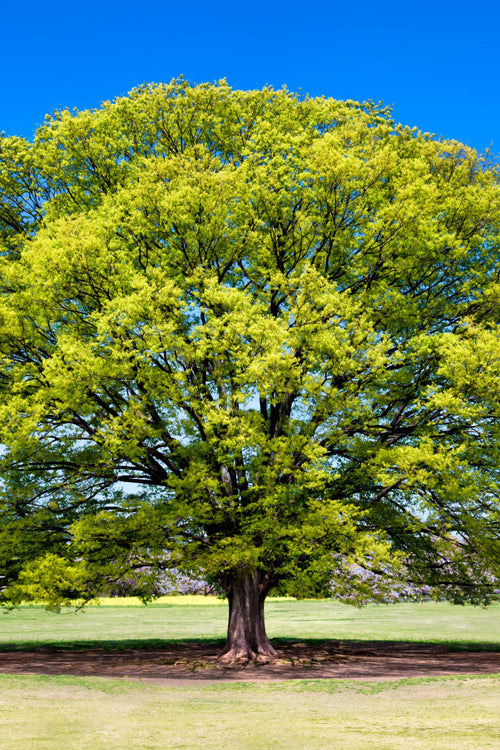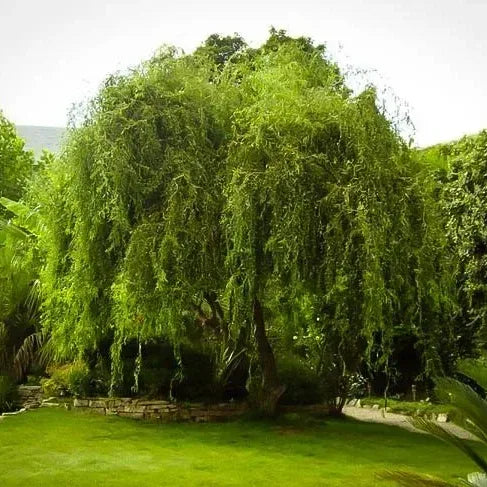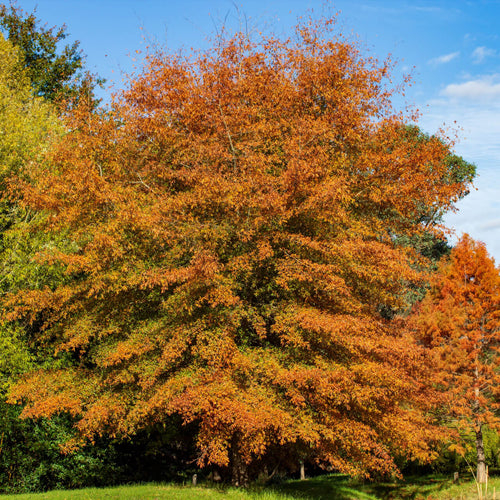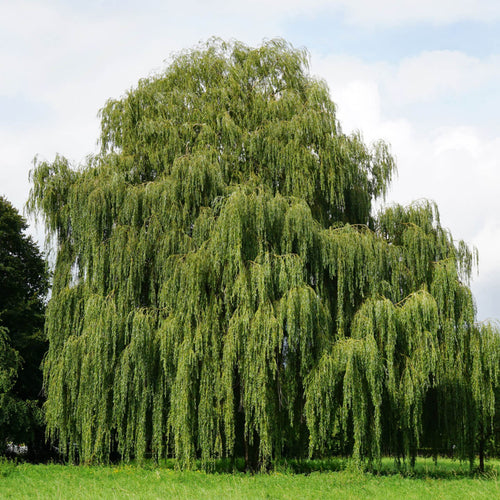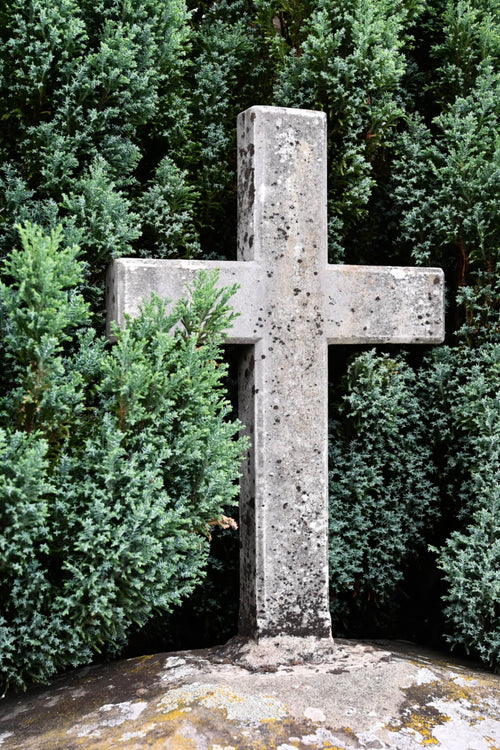Package of 6 Fast Growing Tree Collection
Get six fast-growing trees that are hand-chosen and ideally suited for your shipping zone. This kit is ready-to-grow and contains six robust three to four-foot seedlings that are easy to plant and care for--and they grow faster than most other trees.
PLEASE NOTE THAT THESE ARE A COLLECTION OF PLANTS, NOT SPECIFIC PLANT TYPES. WE CHOOSE TYPES THAT WORK BEST FOR YOUR ZONE ACCORDING TO YOUR ZIP CODE
Fast-growing trees offer a range of benefits that make them highly desirable for various landscaping and gardening purposes.
Here are some critical advantages of fast-growing trees:
1. Quick Results: Fast-growing trees provide a relatively rapid landscape transformation. They can establish a substantial size and presence in a shorter period than slower-growing trees. 2. Shade and Cooling: Fast-growing trees provide shade, especially in sunny outdoor spaces. They can help to cool down your surroundings by blocking the direct sunlight and reducing the ambient temperature. 3. Privacy and Noise Reduction: Fast-growing trees can be used effectively to create natural screens and barriers, offering privacy and seclusion for your property. By strategically planting these trees, you can block unwanted views, minimize noise pollution, and create a more peaceful and secluded environment.4. Erosion Control: Fast-growing trees with extensive root systems can play a crucial role in preventing soil erosion. Their roots help stabilize the soil and bind it together, reducing the risk of decay caused by wind or water. 5. Aesthetics and Landscaping: Fast-growing trees can quickly enhance the aesthetics of your landscape, adding depth, texture, and visual interest. They can serve as focal points, create shade gardens, or provide a backdrop for other plants and features. Their rapid growth can help fill empty spaces and give a more established look to your garden or property.6. Environmental Benefits: Trees, including fast-growing varieties, contribute significantly to the environment. 7. Investment and Property Value: Fast-growing trees can increase the value of your property. The enhanced landscaping, privacy, and aesthetic appeal offered by these trees makes your property more attractive and desirable to potential buyers, potentially leading to higher property values.It is important to note that while fast-growing trees offer numerous benefits, proper care and maintenance are still essential for their long-term health and vitality. Regular pruning, watering, and attention to their specific needs will help ensure their continued success in your landscape.Here are some tips to maximize the growth and health of fast-growing trees in your landscape:1. Site Selection: Choose an appropriate location for planting fast-growing trees. Consider factors such as sunlight exposure, soil conditions, drainage, and available space. Different tree species have specific site requirements, so match the tree's needs with the site conditions to promote optimal growth.2. Soil Preparation: Prepare the soil before planting by loosening it and removing weeds or grass. 3. Proper Planting: Dig a more comprehensive and slightly shallower hole than the tree's root ball when planting fast-growing trees. 4. Watering: Adequate watering is crucial, especially during the establishment period of fast-growing trees. Water deeply and regularly to ensure the root system receives sufficient moisture. Provide a slow, deep watering rather than frequent shallow watering, encouraging the roots to grow deeper and more resilient.5. Mulching: Apply a layer of organic mulch around the tree's base, leaving a gap around the trunk to prevent moisture buildup and potential rot. Mulch helps conserve soil moisture, suppresses weed growth, and regulates soil temperature.6. Pruning: Regular pruning is essential for shaping fast-growing trees and maintaining their structure. 7. Fertilization: Depending on the tree's nutrient requirements, consider fertilizing fast-growing trees annually or as a professional arborist recommends. Use a balanced slow-release fertilizer to provide the necessary nutrients for growth.8. Pest and Disease Management: Monitor the trees regularly for signs of pests or diseases. Early detection and prompt intervention can prevent damage and ensure the tree's health. Consult with a local arborist or extension service for guidance on identifying and managing common pests and diseases in your area.9. Support and Staking: While fast-growing trees are typically robust, some may benefit from temporary staking or support during the early stages of growth. Use soft materials, such as tree straps or horticultural ties, to avoid damage to the bark.10. Ongoing Care: Maintain regular care and attention to your fast-growing trees as they establish and mature. By following these tips and providing appropriate care, you can help ensure that your fast-growing trees reach their full potential and give the desired benefits to your landscape.Fast Growing Trees Package: Imagine this. You want to shade your yard but do not wish to wait decades to reap the benefits of nurturing a tree. TN Nursery hears that concern from customers regularly.
In response to that concern, we assembled a fast-growing trees package. This kit is ready-to-grow and contains six robust three to four-foot seedlings that are easy to plant and care for--and they grow faster than most other trees.
The fast-growing trees package is of tremendous value. You get not only the six trees but also the knowledge of our horticulture staff. We hand-select your collection based on your specific USDA growing zone. You will receive only trees suitable for your local growing conditions.
Order Your Fast-Growing Trees Package From TN Nursery Today
Are you ready to grow shady trees in your yard? Please order the fast-growing trees package from TN Nursery today.
Fast-growing trees are a remarkable flora category renowned for their rapid vertical expansion and prolific branching. These arboreal wonders captivate both nature enthusiasts and landscapers alike, offering an array of benefits that extend beyond their quick growth.
One of their most striking features is their astonishing ability to reach towering heights relatively quickly. Some species can grow several feet each year, immediately and dramatically impacting the landscape. This attribute makes them invaluable for creating natural privacy screens, windbreaks, or shading large areas in a fraction of the time it would take other trees to mature.
Fast Growing Trees Offer Shade
The foliage of them is equally impressive. Lush, vibrant leaves blanket their branches, casting cooling shadows and providing a visual feast throughout the seasons. In spring, these trees burst forth with fresh, delicate leaves, while in autumn, they often put on a spectacular show of fiery colors, enhancing the aesthetic charm of any territory they grace.
Beyond their aesthetic value, they are crucial in environmental conservation. Their rapid growth rate means they can sequester carbon dioxide from the atmosphere quicker than their slower-growing counterparts. Moreover, their extensive root systems help prevent soil erosion and improve soil quality by increasing nutrient availability.
Fast-Growing Trees Help Save Wildlife
These trees attract diverse wildlife, including birds, insects, and small mammals, adding vibrancy to local ecosystems. In urban settings, their cooling shade can lower energy costs and reduce the heat island effect, making them invaluable in mitigating the impacts of climate change.
In conclusion, fast-growing trees are nature's champions of speed and resilience. Their impressive vertical ascent, lush foliage, and positive ecological contributions make them indispensable assets in landscaping, environmental conservation, and creating thriving, vibrant ecosystems. Whether you seek a quick solution for privacy, a canopy of shade, or an ally in combating climate change, fast-growing trees offer a remarkable blend of beauty and utility.

